- Home
- Tom Clancy
Marine: A Guided Tour of a Marine Expeditionary Unit tcml-4 Page 20
Marine: A Guided Tour of a Marine Expeditionary Unit tcml-4 Read online
Page 20
Even before our direct involvement in Vietnam, the shortcomings of the LVTP-5 were well known, and plans were afoot to make good its shortcomings. In 1963, the Marine Corps asked industry to develop a smaller, less costly amtrac with better cross-country performance. FMC's first LVTPX-12 prototype was finished in 1967; and with minor modifications, it entered production in 1971 as the LVTP-7. Production eventually ended in 1983 when an improved version, designated the LVTP-7A1 (also known as the Amphibious Assault Vehicle Seven — AAV-7A1), came into service. A total of 995 of the original vehicles have been rebuilt to the AAV-7A1 standard, joining 403 new production units. LVTP-7s also serve with the naval infantry of Argentina, Brazil, Italy, South Korea, Spain, Thailand, and Venezuela.
The AAV-7 is a huge box of welded aluminum alloy, slightly pointy at one end, 26 ft/7.9 m long, 10 ft, 9 in./3.3 m wide, and 10 ft, 3 in./3.1 m high at the deck. Its EAAK armored version weighs 46,314 lb/21,052 kg empty. There is a lumpy weapons station/turret to starboard and smaller lumps for the platoon sergeant's and driver's hatches to port. Marines enter or exit through an enormous hydraulic-powered ramp at the stern, or through a small hinged door in the ramp itself. The accommodations inside can only be described as "austere," with a row of seats along each wall and a removable bench in the middle. The 400-hp Cummins diesel engine is mounted in the right front, where the massive engine block provides some measure of protection to the crew compartment behind it. The Marines who ride it like to complain about the ventilation system, which seems to suck the exhaust fumes directly into the crew compartment. Diesel fumes may smell awful, but diesel fuel is much less explosive than gasoline if your vehicle is hit. The same basic engine is used in the Army's M2/3 Bradley armored infantry fighting vehicle (IFV). The tracks on each side run over six road wheels, each with a torsion-bar suspension system. In the water, the vehicle is propelled by twin jet-pumps which draw water from above each track and spew it out at a rate of 14,000 gallons/53,000 liters per minute. Steering deflectors on the jet pumps allow the vehicle to turn completely around in its own length.
It was originally intended that the powered one-man turret would carry a German-designed 20mm automatic cannon and a 7.62mm coaxial machine gun. But this proved impractical and the production turret carried the classic and reliable M2 .50-caliber heavy machine gun, with a simple reticle gunsight. A thousand rounds of belted ammunition are stowed in two-hundred-round cans which can be reloaded internally. The improved turret of the LVTP-7A1 is powered by an electric motor rather than a hydraulic drive, and supplements the M2 machine gun with a stubby 40mm Mk. 19 automatic grenade launcher with ninety-six belted rounds as the basic load. Eight externally mounted smoke-grenade launchers can deploy a dense white obscuring cloud over a wide arc in a matter of seconds. A switch on the driver's panel can also be activated to dump raw fuel into the engine exhaust manifold, which generates dark obscuring smoke, at the cost of very high fuel consumption.
On land, the AAV-7 can reach a maximum speed of 45 mph/72 kph. It can climb a 3-ft/.9-m vertical obstacle or cross a trench 8 ft/2.4 m wide. In addition, it can climb an astonishing 60 % grade and negotiate a 40 % slide-slope without tipping over. At 25 mph/40 kph, the maximum endurance is 300 mi/483 km. The driver has an AN/VVS-2 night-vision device, an electro-optical image intensifier, or "starlight scope," that amplifies even the weakest light. On water, the maximum speed is rated as 8 mph/13 kph, but this assumes a calm sea. The AAV-7 is not, however, limited to placid waters; it can operate in higher sea and surf conditions than any other landing craft used in the world's amphibious forces. Theoretically, the AAV-7 can cruise for up to seven hours at 6 mph/9.6 kph, but Marine doctrine, based on considerations of fatigue, control, and navigation, prescribes a run-in to the beach of no more than an hour. An efficient bilge pump serves to keep the crew compartment dry, even in rough seas. Standard navigation equipment is limited to a crude magnetic compass, but today many vehicles have a GPS receiver added to their equipment fit.
In an assault from the sea, Marine platoons will typically embark on their AAV-7s inside the docking well of amphibious transport such as an LPD, LHD, or LSD. The transport will then flood its ballast tanks and open the stern gate, creating a gentle incline for the amtracs to crawl down into the water. They then turn on their water jets and head for the beach. The goal of the amtrac unit is to deliver its passengers safely as close as possible to the objective, where they will dismount and secure the area. The amtracs might then return to their mother ship to pick up a second wave of Marines, or a load of supplies — up to five tons of food, ammunition, and equipment. Note that the amtrac with its driver and gunner "belong" to an amphibious tractor battalion, while the passengers will generally be an embarked Marine infantry platoon belonging to a rifle company. During Desert Storm, most Marine platoons stayed with the same amtrac for the four days of the ground war, using them just like conventional armored personnel carriers.
On dry land, the AAV-7 has severe tactical shortcomings, mostly because of its large size and limited armor protection (in Kuwait, the amtracs were supported by LAVs and main battle tanks). By itself, the AAV-7 is terribly vulnerable to enemy anti-armor weapons, since its thin aluminum armor was designed only to keep out small-arms fire and shell fragments. A bolt-on Enhanced Applique Armor Kit (EAAK) has been developed, which adds several thousand pounds of weight, but defeats the Soviet KPV 14.5mm armor-piercing machine gun, which is carried by many threat helicopters, light armored vehicles, and heavy weapon teams. One of the greatest threats to the crew of an armored vehicle is fire resulting from the penetration of a rocket-propelled grenade or anti-tank guided weapon. The amtrac now carries an automatic fire-suppression system, which combines super-fast-acting infrared sensors with quick-discharge bottles of Halon, an inert gas that snuffs out the fire before the fire can snuff out the crew. In practice, combat vehicles usually spend much of their time in battle with the engine idling, to keep the batteries charged and the radio operating while they wait for orders. The standard vehicle has three secure voice radios; but a special command version has six VHF, one UHF, and one HF set, plus a ten-station intercom system. Very soon, it will be fitted with the new SINCGARS-series radios, which will greatly improve the range and quality of communications for the big craft. As currently planned, the fleet of AAV-7s will have to serve about another fifteen years until the arrival of the new Advanced Amphibious Assault Vehicle, which is currently under development. Until roughly 2006, they will have to hold the line, and continue doing their uncomfortable, dangerous job.
The Future: The Advanced Amphibious Assault Vehicle (AAAV)
A quiet little program run out of an office building in Arlington, Virginia, will provide a replacement for the long-serving AAV-7s. The Advanced Amphibious Assault Vehicle (AAAV) is going to be the world's most advanced armored fighting vehicle, with capabilities previously undreamed of by Marines, or by soldiers of any nation. Our story begins back in the late 1970s when the Marines began to reevaluate their doctrine for forced entry amphibious operations. Ever since "Brute" Krulak took the first unit of amphibious tractors out on their evaluation trials, higher speed through the water has been a desired goal. There even was a stillborn program, the Landing Vehicle Assault (LVA) back in the 1970s, that was designed to achieve that goal. Unfortunately, the technology to achieve the lofty requirements of the LVA specification simply was not there, and the program was terminated in 1979.
An Advanced Amphibious Assault Vehicle (AAAV) prototype during high-speed water trials. Production AAAVs will be able to transit over 25 nm/48 km fully loaded through heavy seas in less than an hour.
UNITED DEFENSE
Now, you did not need to have a Ph.D. in Systems Engineering back then to figure out that the nature of naval warfare was changing. These changes, though, did not invalidate the high-speed amphibious tractor requirement. On the contrary, it was being rapidly confirmed by current events. One look at any one of a dozen trade publications would have shown you the variety
of weapons and systems being developed to attack surface vessels from ships, subs, planes, and shore bases. In short, the closer an amphibious task force approached an enemy shore, the more dangerous it was getting. Take, for example, the British experience in the Falklands War of 1982: In less than a month of amphibious and support operations, the Royal Navy lost two destroyers, two frigates, a pair of landing ships, and a container ship to Argentine air and missile attacks. Several times this number were damaged. The lessons were made clear for the whole world to see: Put yourself within visual range of a hostile shore, and you'll get shot with weapons that will likely hit you and hurt you.
If the Falklands experience was bad, everyone who dealt with such matters knew that the future was going to be worse. They knew that within a few years, you would need to stand away from an enemy shore and deliver your forces from a long distance if your large amphibious forces were to survive. Thus, the Marines and Navy began to develop new ships and delivery systems that would allow a greater standoff from the shoreline during amphibious operations. The Marines' part in this revolution in amphibious warfare doctrine is centered around three systems. The first of these was the LCAC, which allowed the amphibs to stand over 50 nm/91 km from the shoreline. Following the LCAC will be the MV-22B Osprey tilt-rotor transport aircraft, which is designed to replace the CH-46E Sea Knight. With greater speed, range, and payload (by roughly 300 %) than the Sea Knight, it allows a ship like the Wasp (LHD-1) to stand over 200 nm/366 km offshore and still put its cargo ashore in about an hour. The final system designed to exploit standoff from the beach will be the AAAV.
The AAAV is designed to move at speeds over 25 kn/45 kph, so that the ship that launches it can stand over the visual horizon from the beach. And that's very good. But more important, the AAAV is going to be the finest armored IFV ever built, better even than the Army's M2/3 Bradley fighting vehicle. This is a tall claim for a system that has just had its prime contractor (General Dynamics, Land Systems) selected, but you have to understand the Marine Corps' approach to a design problem like this one to appreciate why. To repeat something I've said before: The technology base of the Marines is very narrow and specifically tailored to the missions of the Corps. Well, the technology elements of the AAAV fall into just that category, which means that the Corps has invested much of its hard-fought research and development (R&D) budget in the AAAV effort. Now, you might ask what it takes to give a high-performance IFV the characteristics of a high-speed powerboat. Well, the following is a list of some of the systems that had to be developed to make the AAAV possible:
• High-Speed Hull—Over a series of fifteen years, a series of high-speed-planing-hull designs has been developed to test the feasibility of the AAAV concept. Through the use of three subscale test models (built by AAI Corporation), a basic design utilizing a retractable bow flap, which acts like a surfboard, has been settled upon as the basis for the AAAV design. Called "Skimming Bricks," they are providing a solid database of experience with which to develop the AAAV hull.
• Dual Mode Propulsion System—The AAAV will be equipped with an incredible 2,600-hp MTU/Detroit Diesel turbocharged diesel engine. Sealed as a self-contained power unit, it will last up to nine years, and only require an oil change every two years! Working through an automatic transmission, it will drive a pair of powerful 23-in./60-cm-diameter water jets, which will drive it through the water at speed approaching 43 mph/70.5 kph in calm seastates. The propulsion system is so powerful that the twin sets of impeller blades will puree a four-inch-by-four-inch log without a blink. Once it approaches to within a few hundred yards/meters of the beach, the track system will take over, still pushing the AAAV through the surf at around 8 mph/13 kph. Once on dry land, the AAAV will have better mobility than an M 1 Abrams tank, while only using about 800 hp from the engine.
• Retractable Track System—If the AAAV is to obtain high speeds through the water, the track system must be shrouded from the water flow under the vehicle. To this end, the AAAV's track system retracts into the vehicle, and is dropped when it approaches the beach. All of this takes place in just under twenty seconds. Once on dry land, it utilizes the same kind of hydropneumatic suspension system as the M1, which will give it excellent mobility.
• Armor Protection System—The armor-protection system of the AAAV will likely take advantage of the advanced composite armor development being done by United Defense. This will allow the relatively large (27 ft/8.2 m long, 12 ft/3.7 m wide, and 10 ft/3 m tall) AAAV to weigh in at only thirty to thirty-six tons, yet still have better protection than the M2/3A3 variant of the Bradley IFV. In addition, there appears to be some effort to reduce the acoustic, infrared, visual, and possibly even radar signatures of the AAAV.
• Vehicle Electronics System—Like the M1A2 Abrams and M2/3A3 Bradley, the AAAV will be equipped to operate on the planned digital battlefield of the 21st century. This will include second-generation FLIR viewer systems for the driver and gunner/commander. In addition, the AAAV will be equipped with the same kind of vehicle electronics as the M1A2 and MZ/3A3, including a digital data bus with onboard diagnostics, GPS tied to a moving map display, a combat identification system to avoid fratricide, and a digital data link fed through three of the new SINCGARS jam-resistant radios. All of this will be controlled by a vehicle software package that will be composed of between 300,000 and 500,000 lines of Ada code, over a Mil. STD-1553 data bus. The driver will even control the throttle, steering, and brakes through a computer, what the Marines call a "drive-by-wire" system!
• Armament Package — While this particular item is still being decided upon, current planning has the AAAV equipped with an M242 25mm Bushmaster cannon and a 7.62mm machine gun, like those on the M2/3 Bradley and the LAV-25. There had been plans to perhaps arm the new amtrac with a special 35mm cannon firing time-fused ammunition, but this will probably not happen. But it may carry a twin launcher for the new fire-and-forget Javelin anti-armor missile, if all goes well. All of the AAAV's armament will be usable both in the water and on dry land, and is designed to provide it with the firepower to survive and overmatch other armored vehicles on the battlefield.
• Payload/Range—Each AAAV will be capable of transporting a thirteen-man rifle squad and a heavy weapons team — about eighteen personnel plus the three-man crew. Given this load, the AAAV will be capable of swimming up to 65 nm/120 km, or traveling up to 300 mi/483 km on dry land. A normal mission configuration would have the vehicle swimming in from about 25 nm/46 km offshore, moving about 100 mi/161 km to and from the objective, and then swimming back to the mother ship. The minimum high water speed will be 25 mph/40.2 kph, and maximum 43 mph/69.2 km. All of this in seas up to 10 ft/3 m. In the event an AAAV is overturned, it is capable of righting itself automatically in up to Seastate 5.
• Production Variants—Current USMC plans call for a total of 1,013 AAAVs to be produced by 2012, the planned termination date of the contract. Of these, there will be 948 transport versions, and 75 configured as mobile command posts. Planned IOC will be in 2006, and the 1,013 AAAVs will replace a force of 1,323 LVTP-7/AAV-7 amtracs. There will not be a recovery version, since it is planned that other chassis (the M88 carried for the M1A1s) can do double duty for this job. Unit cost has yet to be fixed, but will likely be between $2 and $4 million a copy (comparable to the cost of a new M1A2 MBT). Hard work is being done to drive this cost down.
It is likely that the AAAV will be the last armored vehicle procured by the Marine Corps in the foreseeable future. It therefore must be able to survive and dominate its chosen battlespace for most of the first half of the 21st century. It is an ambitious program, though all of the technologies are well proven and understood by all of those involved.
Transportation
While Marine units are anything but "heavy" where vehicles are concerned, they still require their share of trucks and other transportation assets to keep themselves supplied and mobile. For this reason, the Corps has carefully selected a few varieties of trans
port vehicles to support their expeditionary units, and is generally quite happy with them. A proper complement of transport vehicles is vital for a unit like a MEU (SOC), since there is only so much room aboard its amphibious ships to stow its gear. In fact, while you will find about thirty armored vehicles in such a unit, it will have over one hundred trucks of different types, including those mounting machine guns, mortars, and missiles. Here are the most important of these:
AM General M998 High-Mobility Medium Wheeled Vehicle (HMMWV)
The vast majority of vehicles in the Army and Marine Corps today derive from the classic M998 High-Mobility Medium Wheeled Vehicle (HMMWV). Like the Army, the Corps has embraced the "Hummer," and it has performed nobly in a vast variety of tasks. Produced for over a decade by AM General of South Bend, Indiana, the HMMWV is used for everything from ambulance duty to air defense. Powered by a diesel V-8 engine, it is practically indestructible and can climb anything that a member of any military force in the world might want to take and hold. Today, the Marine Corps' buy of Hummers is pretty much complete, though there will probably be additional buys in the 21st Century as older models wear out. As it is, the M998s that the Marines use are being heavily used, and will probably require a mid-life service life-extension program (SLEP) sometime in the next ten years or so. In the short term, if a Marine offers you a ride, expect it to be in an HMMWV

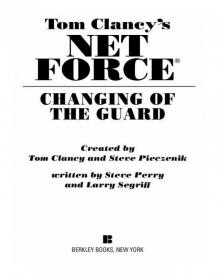 Changing of the Guard
Changing of the Guard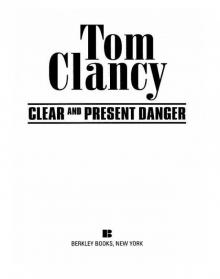 Clear and Present Danger
Clear and Present Danger Hounds of Rome
Hounds of Rome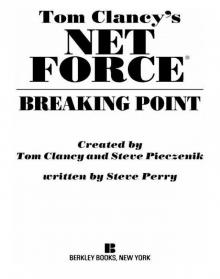 Breaking Point
Breaking Point Tom Clancy's Jack Ryan Books 7-12
Tom Clancy's Jack Ryan Books 7-12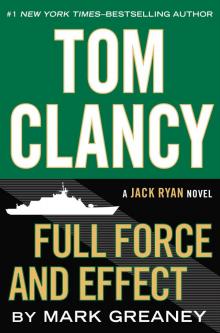 Full Force and Effect
Full Force and Effect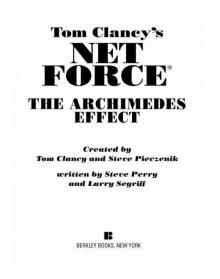 The Archimedes Effect
The Archimedes Effect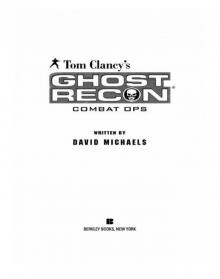 Combat Ops
Combat Ops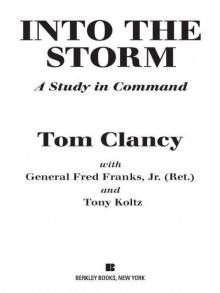 Into the Storm: On the Ground in Iraq
Into the Storm: On the Ground in Iraq Under Fire
Under Fire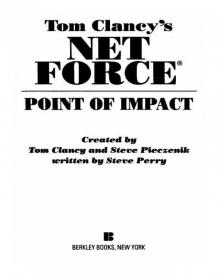 Point of Impact
Point of Impact Red Rabbit
Red Rabbit Rainbow Six
Rainbow Six The Hunt for Red October
The Hunt for Red October The Teeth of the Tiger
The Teeth of the Tiger Conviction (2009)
Conviction (2009)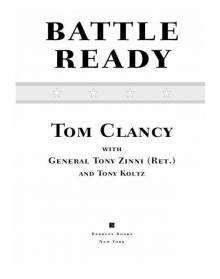 Battle Ready
Battle Ready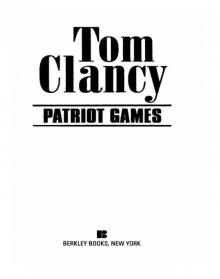 Patriot Games
Patriot Games The Sum of All Fears
The Sum of All Fears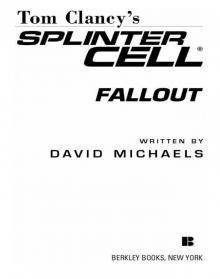 Fallout (2007)
Fallout (2007) Red Storm Rising
Red Storm Rising The Cardinal of the Kremlin
The Cardinal of the Kremlin Executive Orders
Executive Orders Lincoln, the unknown
Lincoln, the unknown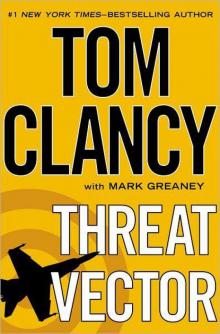 Threat Vector
Threat Vector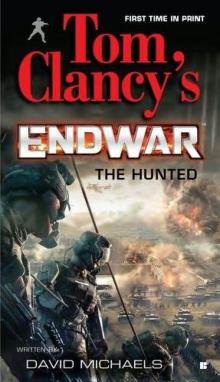 The Hunted
The Hunted Shadow Warriors: Inside the Special Forces
Shadow Warriors: Inside the Special Forces End Game
End Game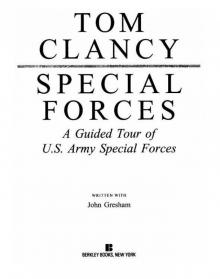 Special Forces: A Guided Tour of U.S. Army Special Forces
Special Forces: A Guided Tour of U.S. Army Special Forces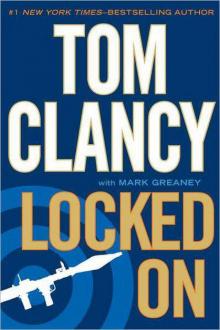 Locked On
Locked On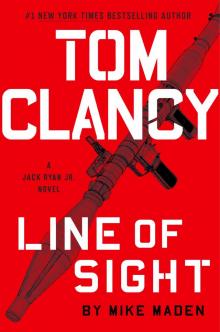 Line of Sight
Line of Sight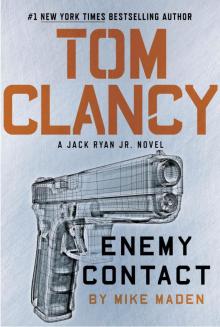 Tom Clancy Enemy Contact - Mike Maden
Tom Clancy Enemy Contact - Mike Maden Fighter Wing: A Guided Tour of an Air Force Combat Wing
Fighter Wing: A Guided Tour of an Air Force Combat Wing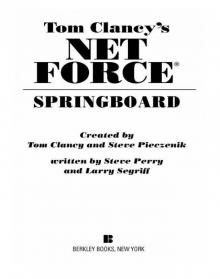 Springboard
Springboard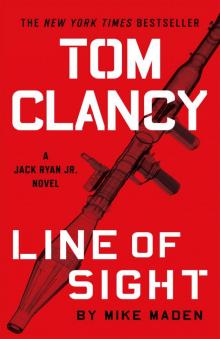 Line of Sight - Mike Maden
Line of Sight - Mike Maden EndWar
EndWar Dead or Alive
Dead or Alive Tom Clancy Support and Defend
Tom Clancy Support and Defend Checkmate
Checkmate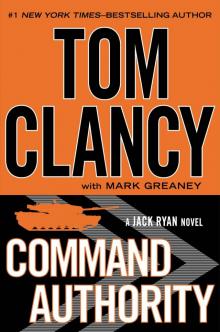 Command Authority
Command Authority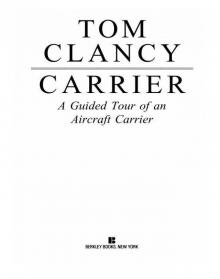 Carrier: A Guided Tour of an Aircraft Carrier
Carrier: A Guided Tour of an Aircraft Carrier Blacklist Aftermath
Blacklist Aftermath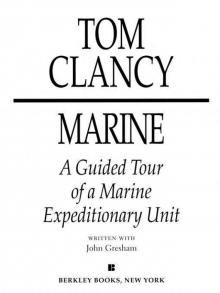 Marine: A Guided Tour of a Marine Expeditionary Unit
Marine: A Guided Tour of a Marine Expeditionary Unit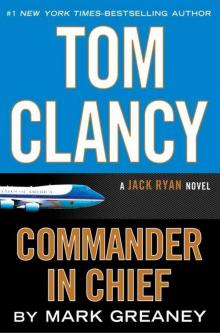 Commander-In-Chief
Commander-In-Chief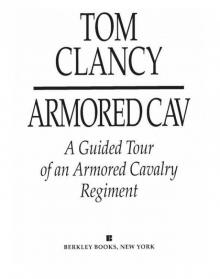 Armored Cav: A Guided Tour of an Armored Cavalry Regiment
Armored Cav: A Guided Tour of an Armored Cavalry Regiment Tom Clancy's Jack Ryan Books 1-6
Tom Clancy's Jack Ryan Books 1-6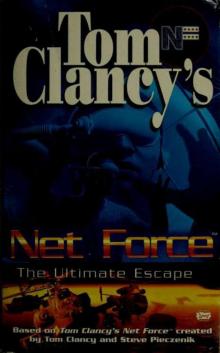 The Ultimate Escape
The Ultimate Escape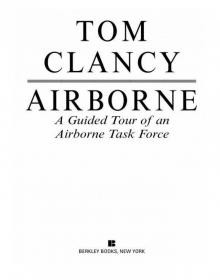 Airborne: A Guided Tour of an Airborne Task Force
Airborne: A Guided Tour of an Airborne Task Force Debt of Honor
Debt of Honor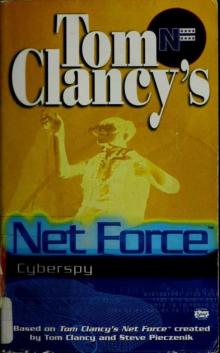 Cyberspy
Cyberspy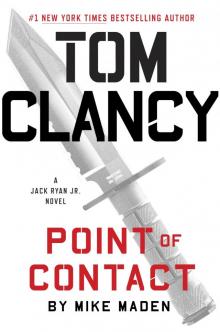 Point of Contact
Point of Contact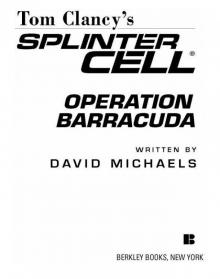 Operation Barracuda (2005)
Operation Barracuda (2005)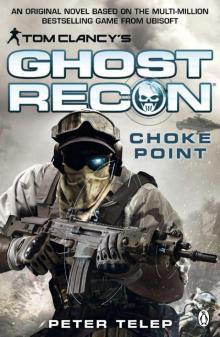 Choke Point
Choke Point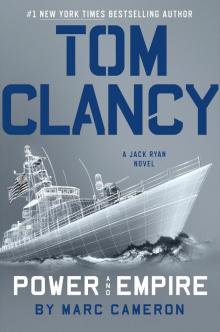 Power and Empire
Power and Empire Every Man a Tiger: The Gulf War Air Campaign
Every Man a Tiger: The Gulf War Air Campaign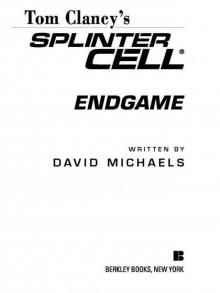 Endgame (1998)
Endgame (1998)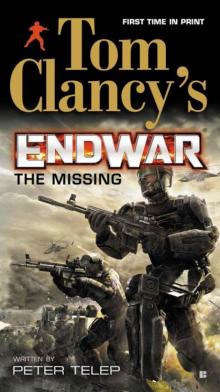 EndWar: The Missing
EndWar: The Missing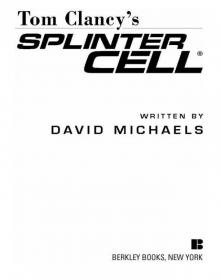 Splinter Cell (2004)
Splinter Cell (2004)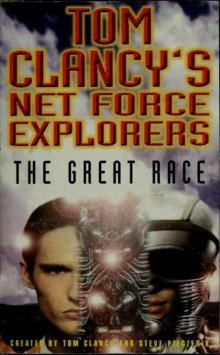 The Great Race
The Great Race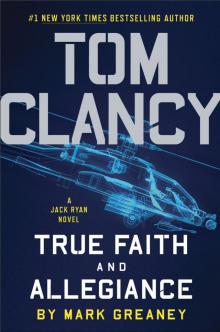 True Faith and Allegiance
True Faith and Allegiance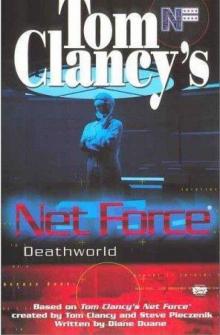 Deathworld
Deathworld Ghost Recon (2008)
Ghost Recon (2008)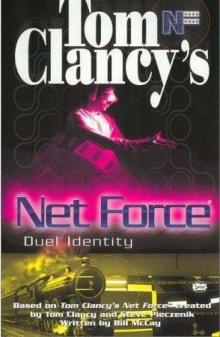 Duel Identity
Duel Identity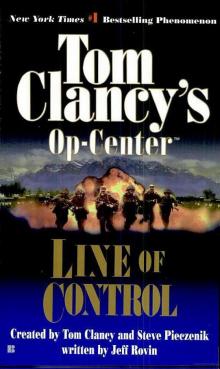 Line of Control o-8
Line of Control o-8 The Hunt for Red October jr-3
The Hunt for Red October jr-3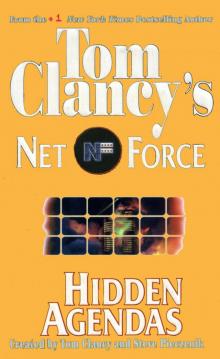 Hidden Agendas nf-2
Hidden Agendas nf-2 Acts of War oc-4
Acts of War oc-4 Ruthless.Com pp-2
Ruthless.Com pp-2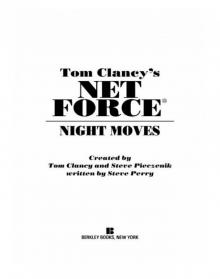 Night Moves
Night Moves The Hounds of Rome - Mystery of a Fugitive Priest
The Hounds of Rome - Mystery of a Fugitive Priest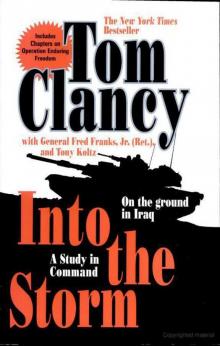 Into the Storm: On the Ground in Iraq sic-1
Into the Storm: On the Ground in Iraq sic-1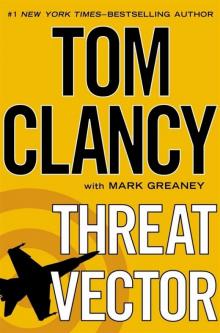 Threat Vector jrj-4
Threat Vector jrj-4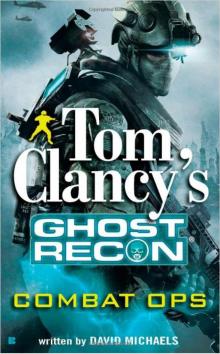 Combat Ops gr-2
Combat Ops gr-2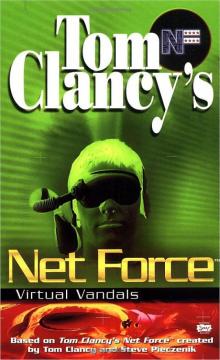 Virtual Vandals nfe-1
Virtual Vandals nfe-1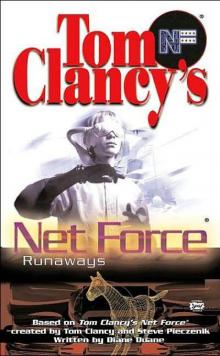 Runaways nfe-16
Runaways nfe-16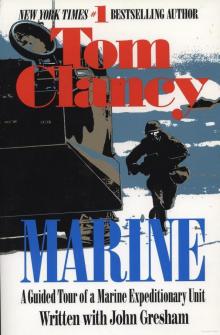 Marine: A Guided Tour of a Marine Expeditionary Unit tcml-4
Marine: A Guided Tour of a Marine Expeditionary Unit tcml-4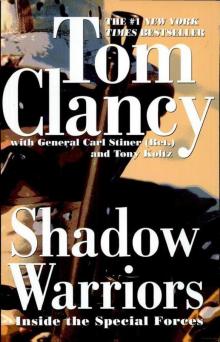 Shadow Warriors: Inside the Special Forces sic-3
Shadow Warriors: Inside the Special Forces sic-3 Jack Ryan Books 1-6
Jack Ryan Books 1-6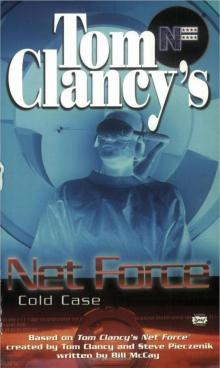 Cold Case nfe-15
Cold Case nfe-15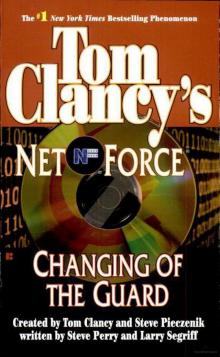 Changing of the Guard nf-8
Changing of the Guard nf-8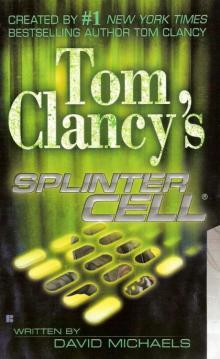 Splinter Cell sc-1
Splinter Cell sc-1 Battle Ready sic-4
Battle Ready sic-4 The Bear and the Dragon jrao-11
The Bear and the Dragon jrao-11 Fighter Wing: A Guided Tour of an Air Force Combat Wing tcml-3
Fighter Wing: A Guided Tour of an Air Force Combat Wing tcml-3 Patriot Games jr-1
Patriot Games jr-1 Jack Ryan Books 7-12
Jack Ryan Books 7-12 Mission of Honor o-9
Mission of Honor o-9 Private Lives nfe-9
Private Lives nfe-9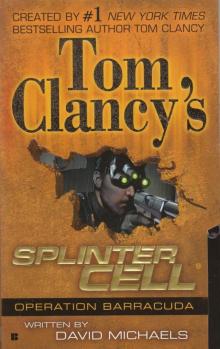 Operation Barracuda sc-2
Operation Barracuda sc-2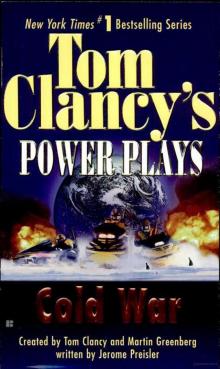 Cold War pp-5
Cold War pp-5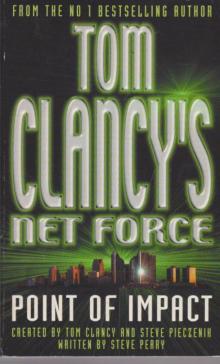 Point of Impact nf-5
Point of Impact nf-5 Red Rabbit jr-9
Red Rabbit jr-9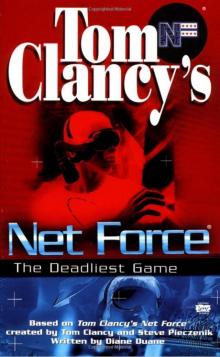 The Deadliest Game nfe-2
The Deadliest Game nfe-2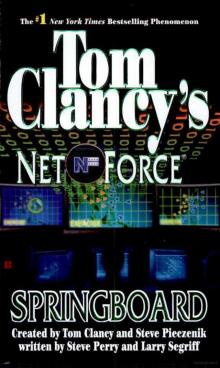 Springboard nf-9
Springboard nf-9 Safe House nfe-10
Safe House nfe-10 EndWar e-1
EndWar e-1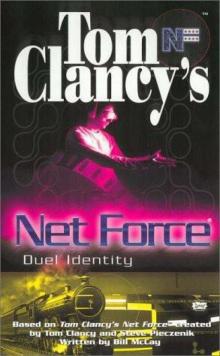 Duel Identity nfe-12
Duel Identity nfe-12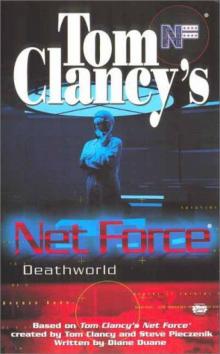 Deathworld nfe-13
Deathworld nfe-13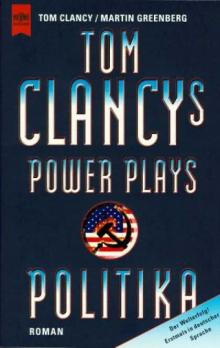 Politika pp-1
Politika pp-1 Rainbow Six jr-9
Rainbow Six jr-9 Tom Clancy's Power Plays 1 - 4
Tom Clancy's Power Plays 1 - 4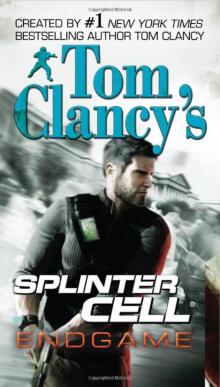 Endgame sc-6
Endgame sc-6 Executive Orders jr-7
Executive Orders jr-7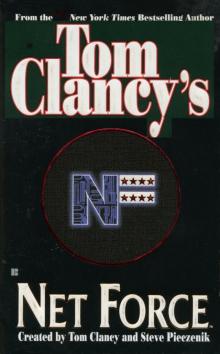 Net Force nf-1
Net Force nf-1 Call to Treason o-11
Call to Treason o-11 Locked On jrj-3
Locked On jrj-3 Against All Enemies
Against All Enemies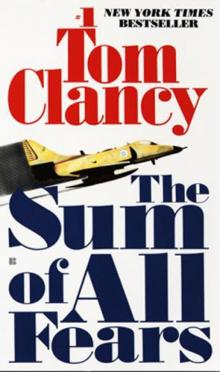 The Sum of All Fears jr-7
The Sum of All Fears jr-7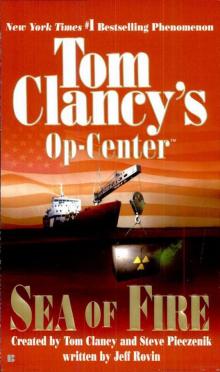 Sea of Fire o-10
Sea of Fire o-10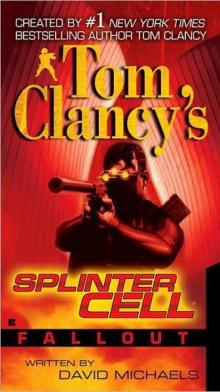 Fallout sc-4
Fallout sc-4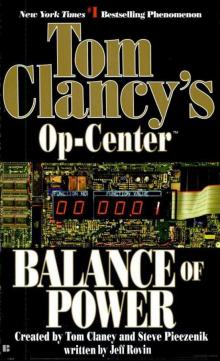 Balance of Power o-5
Balance of Power o-5 Shadow Watch pp-3
Shadow Watch pp-3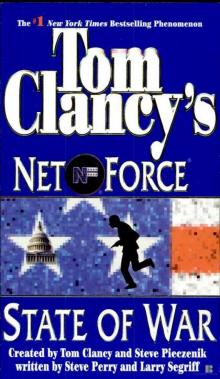 State of War nf-7
State of War nf-7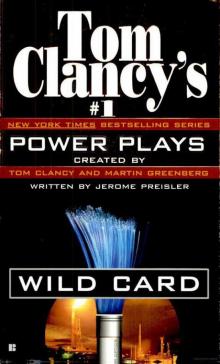 Wild Card pp-8
Wild Card pp-8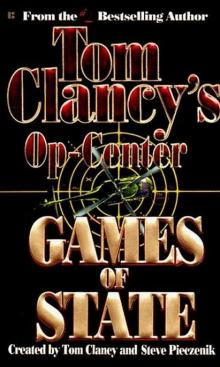 Games of State o-3
Games of State o-3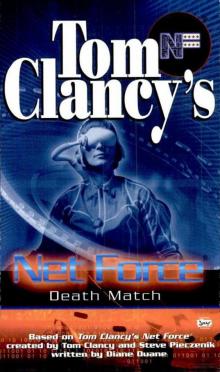 Death Match nfe-18
Death Match nfe-18 Against All Enemies mm-1
Against All Enemies mm-1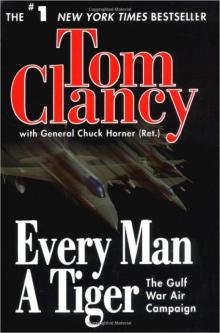 Every Man a Tiger: The Gulf War Air Campaign sic-2
Every Man a Tiger: The Gulf War Air Campaign sic-2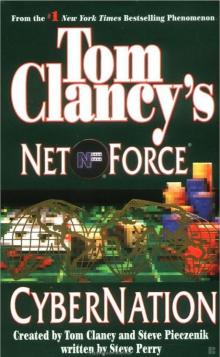 Cybernation nf-6
Cybernation nf-6 Support and Defend
Support and Defend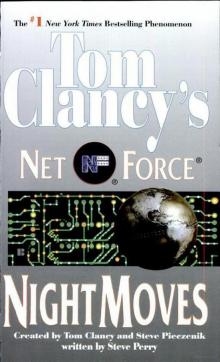 Night Moves nf-3
Night Moves nf-3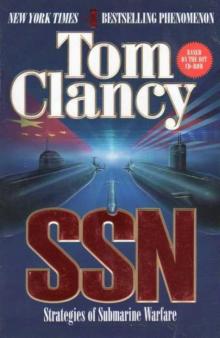 SSN
SSN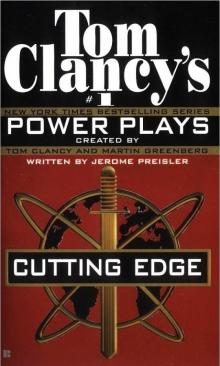 Cutting Edge pp-6
Cutting Edge pp-6 The Cardinal of the Kremlin jrao-5
The Cardinal of the Kremlin jrao-5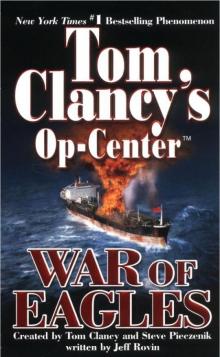 War of Eagles o-12
War of Eagles o-12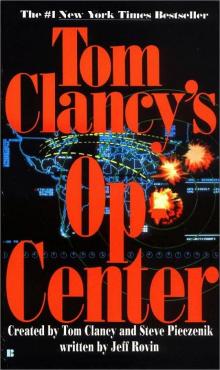 Op-Center o-1
Op-Center o-1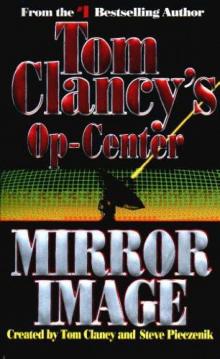 Mirror Image o-2
Mirror Image o-2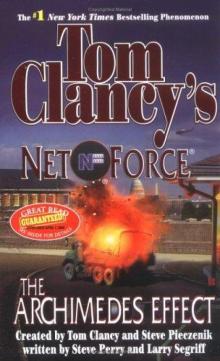 The Archimedes Effect nf-10
The Archimedes Effect nf-10 Teeth of the Tiger jrj-1
Teeth of the Tiger jrj-1 Bio-Strike pp-4
Bio-Strike pp-4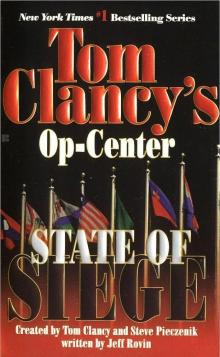 State of Siege o-6
State of Siege o-6 Debt of Honor jr-6
Debt of Honor jr-6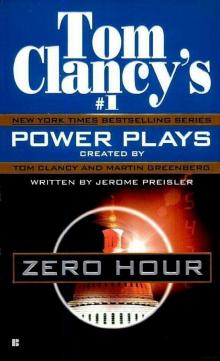 Zero Hour pp-7
Zero Hour pp-7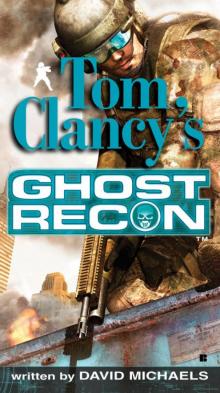 Ghost Recon gr-1
Ghost Recon gr-1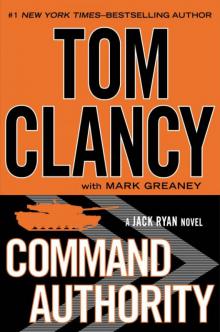 Command Authority jr-10
Command Authority jr-10 Tom Clancy's Power Plays 5 - 8
Tom Clancy's Power Plays 5 - 8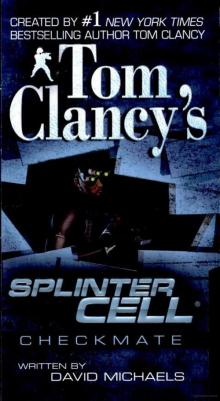 Checkmate sc-3
Checkmate sc-3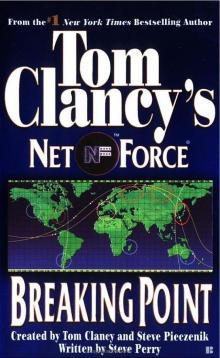 Breaking Point nf-4
Breaking Point nf-4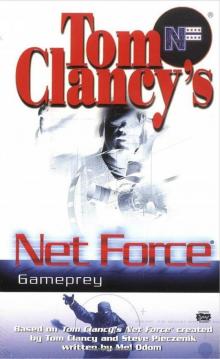 Gameprey nfe-11
Gameprey nfe-11 The Hunted e-2
The Hunted e-2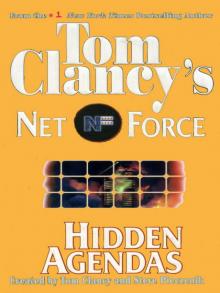 Hidden Agendas
Hidden Agendas Divide and Conquer o-7
Divide and Conquer o-7